
Uno de los grandes atractivos de la Patagonia son sus siete lagos, ubicados entre la Provincia de Rio Negro y Neuquén de Argentina. Para el recorrido de los mismos, es necesario salir temprano y tomar la famosa ruta 40, a fin de realizar las respectivas paradas y observar la inmensidad y belleza natural de cada lago.
One of the great attractions of Patagonia are its seven lakes, located between the provinces of Rio Negro and Neuquén in Argentina. To visit them, it is necessary to leave early and take the famous Route 40, in order to make the respective stops and observe the immensity and natural beauty of each lake.
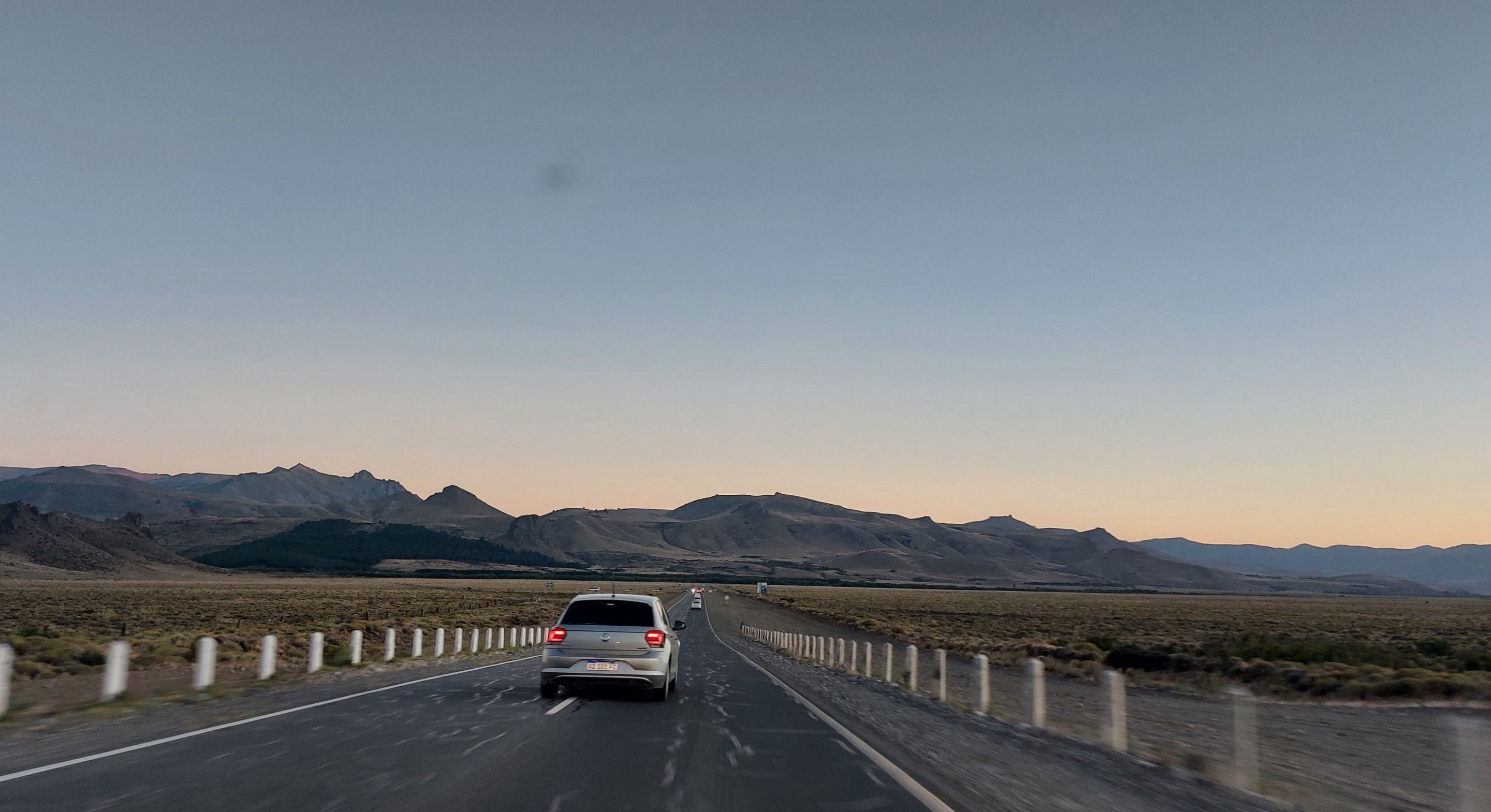
Emprendimos nuevamente nuestro viaje, saliendo de San Carlos de Bariloche y encontrarnos en primer lugar con un pueblito llamado Villa la Angostura, aquí hicimos la única parada para comer e ir al baño, ya que no habrá ninguna otra hasta llegar a San Martin de los Andes, en un tiempo aproximado de 3 horas.
We started our trip again, leaving San Carlos de Bariloche and finding ourselves in the first place with a small town called Villa la Angostura, here we made the only stop to eat and go to the bathroom, since there will be no other until arriving to San Martin de los Andes, in approximately 3 hours.

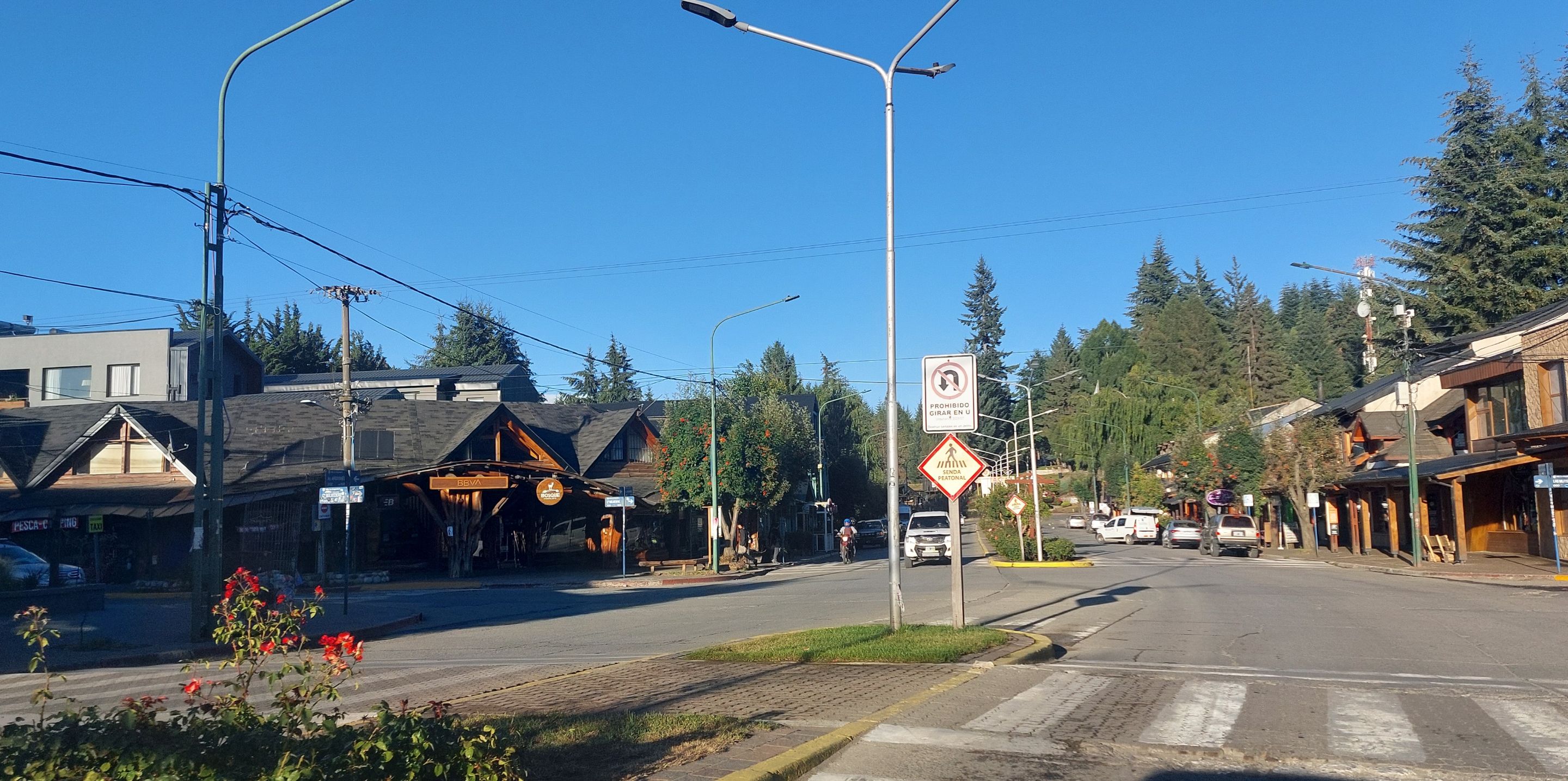
El primer lago que nos aparece se llama Lago Espejo, este nombre fue asignado por el reflejo que tiene en sus aguas del paisaje que lo rodea. En este lago y como se puede observar en la descripción del cartel, es muy característico de este lugar la presencia de la rana verde dorada, cuya piel cambia de color como un camaleón.
The first lake that appears to us is called Lake Mirror, this name was assigned by the reflection that has in its waters of the landscape that surrounds it. In this lake and as can be seen in the description of the poster, is very characteristic of this place the presence of the golden green frog, whose skin changes color like a chameleon.

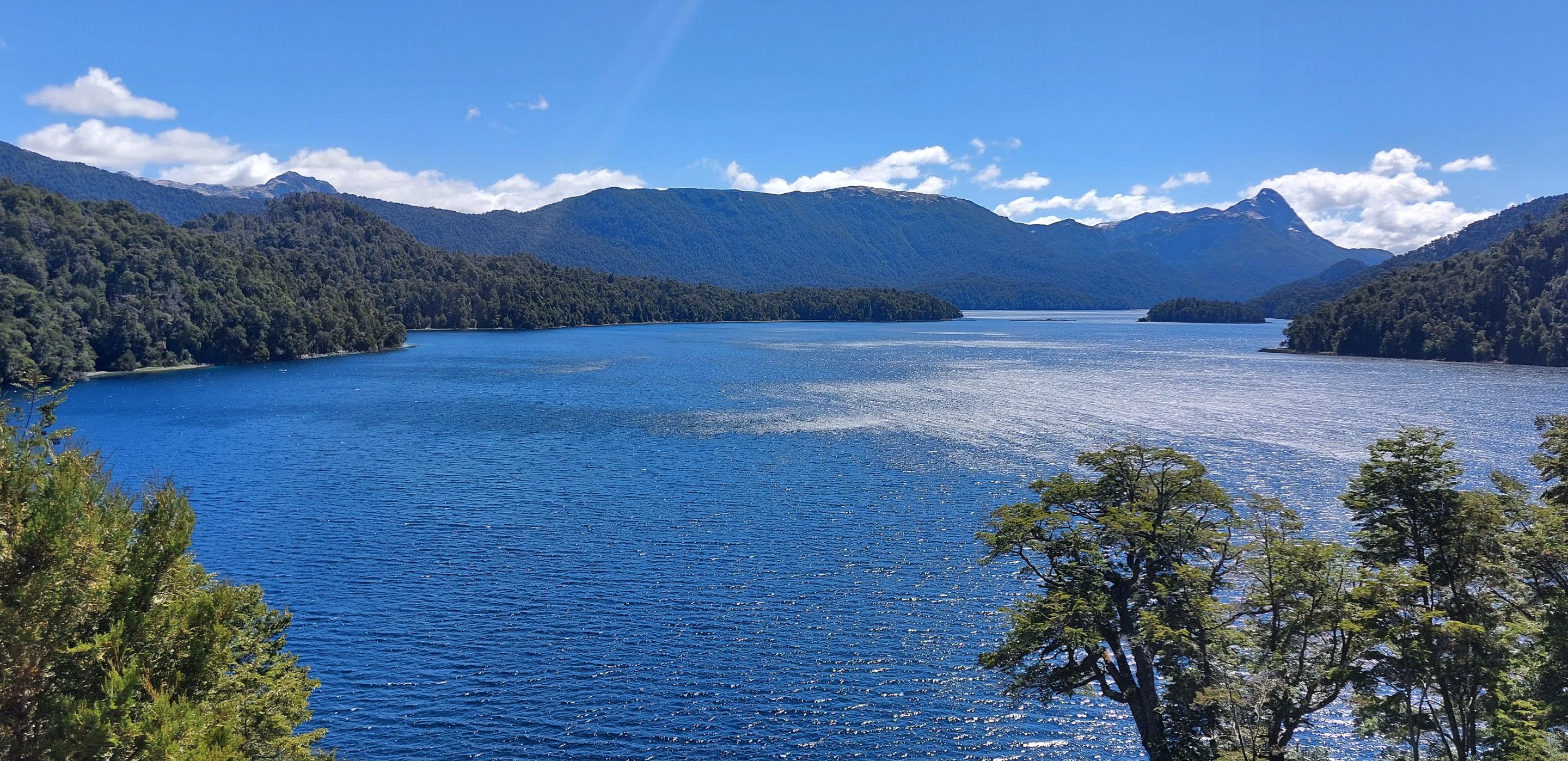
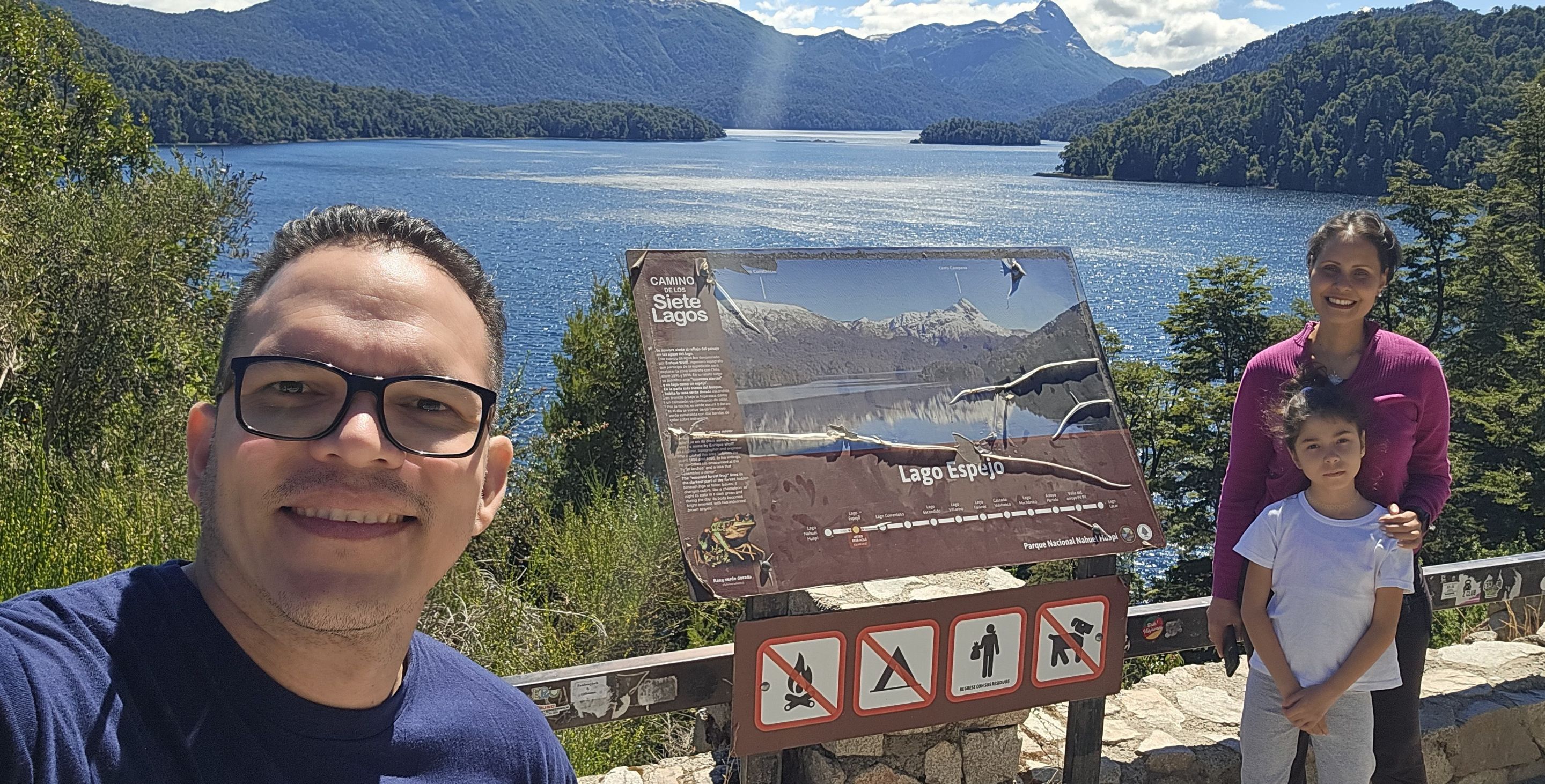
El siguiente es el Lago Correntoso, su nombre es debido a la fuerza de las corrientes de agua que circulan por él, sus aguas se unen con el lago Espejo, todos estos productos del deshielo y lluvias. En este lugar, es común en épocas de primavera, la presencia de un ave llamada Cauquén Real, la cual solo viene en esa estación para poner su cría.
The next one is the Correntoso Lake, its name is due to the strength of the water currents that flow through it, its waters join with the Espejo Lake, all these products of the thaw and rains. In this place, it is common in spring time, the presence of a bird called Cauquén Real, which only comes in that season to lay its young.

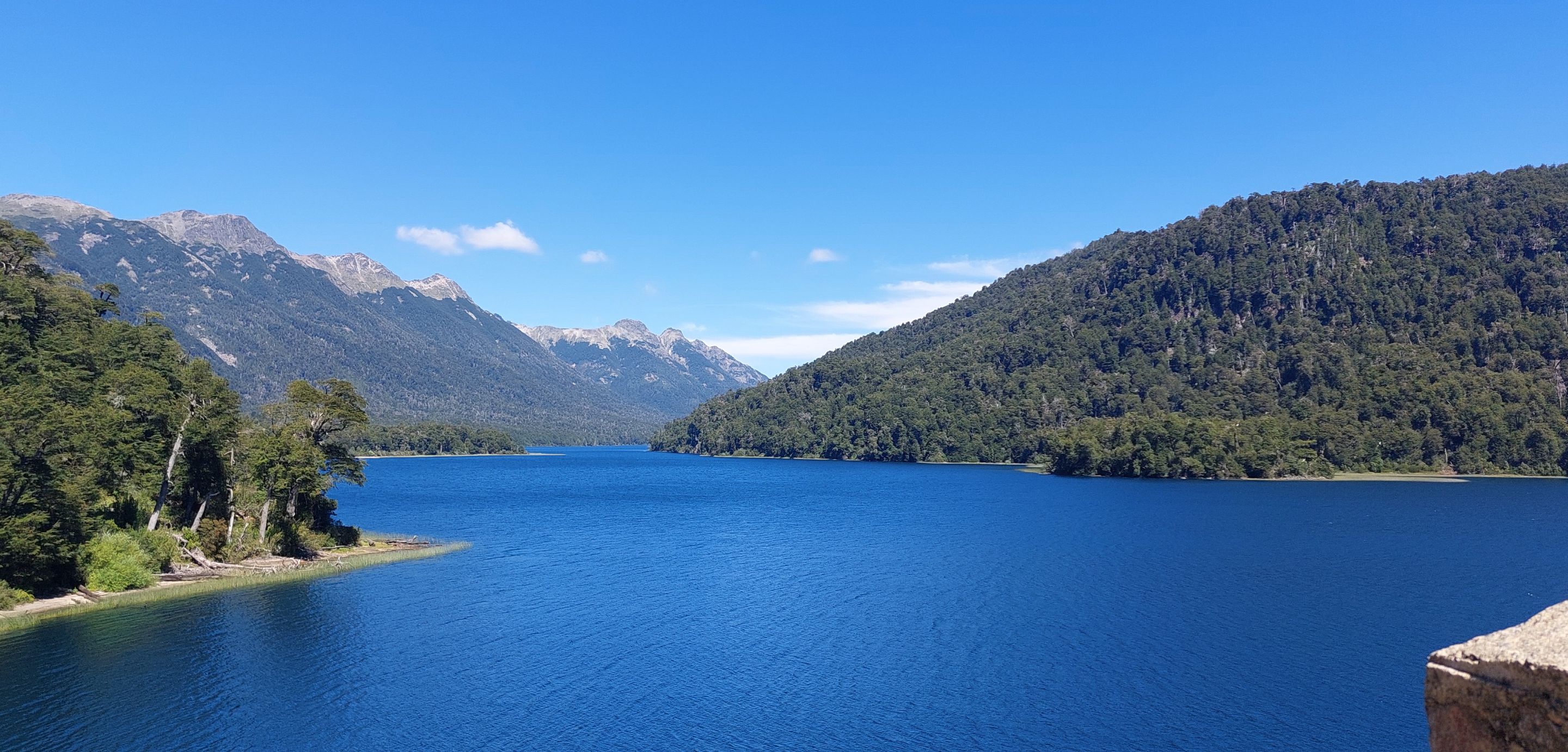
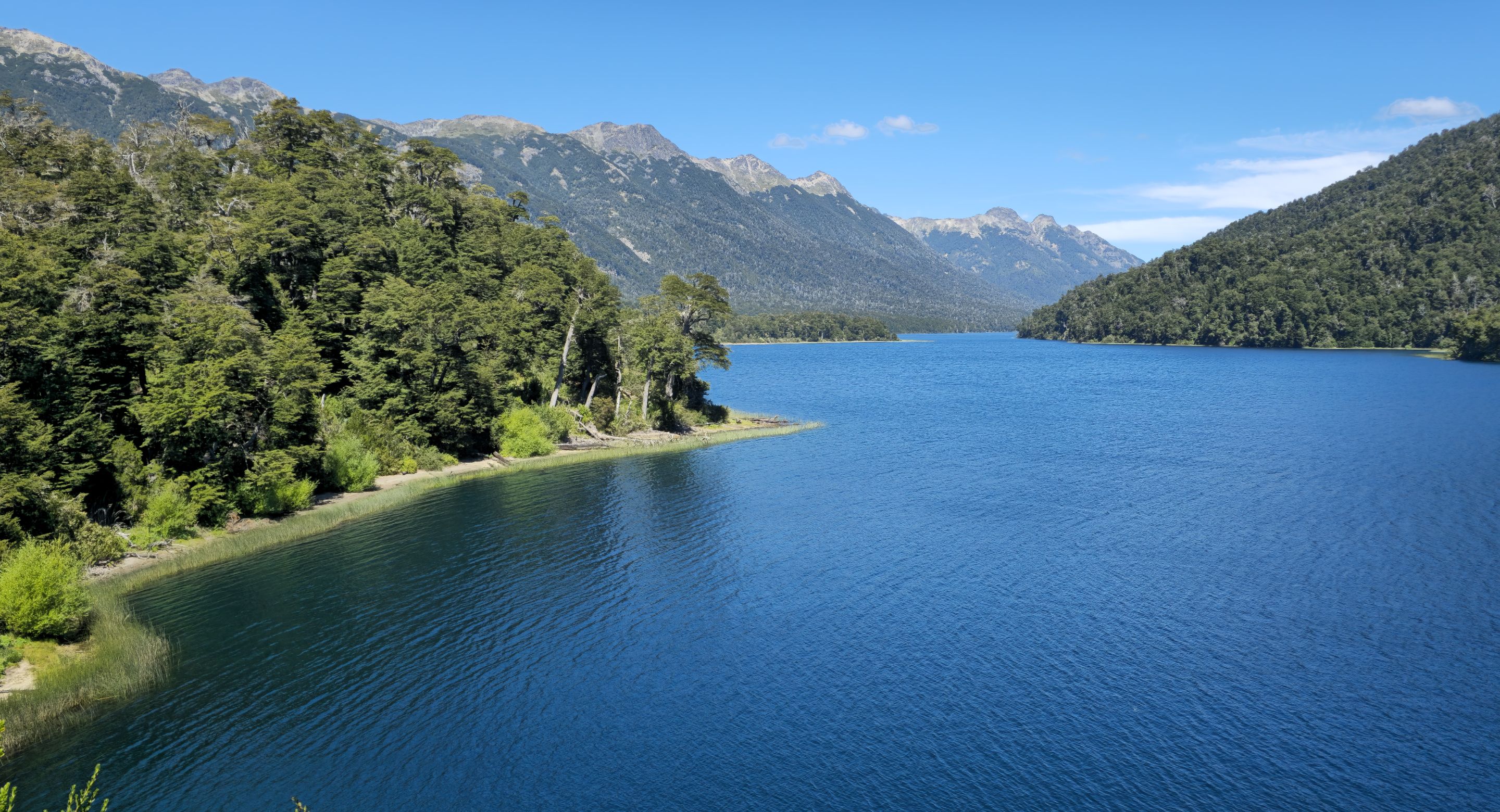

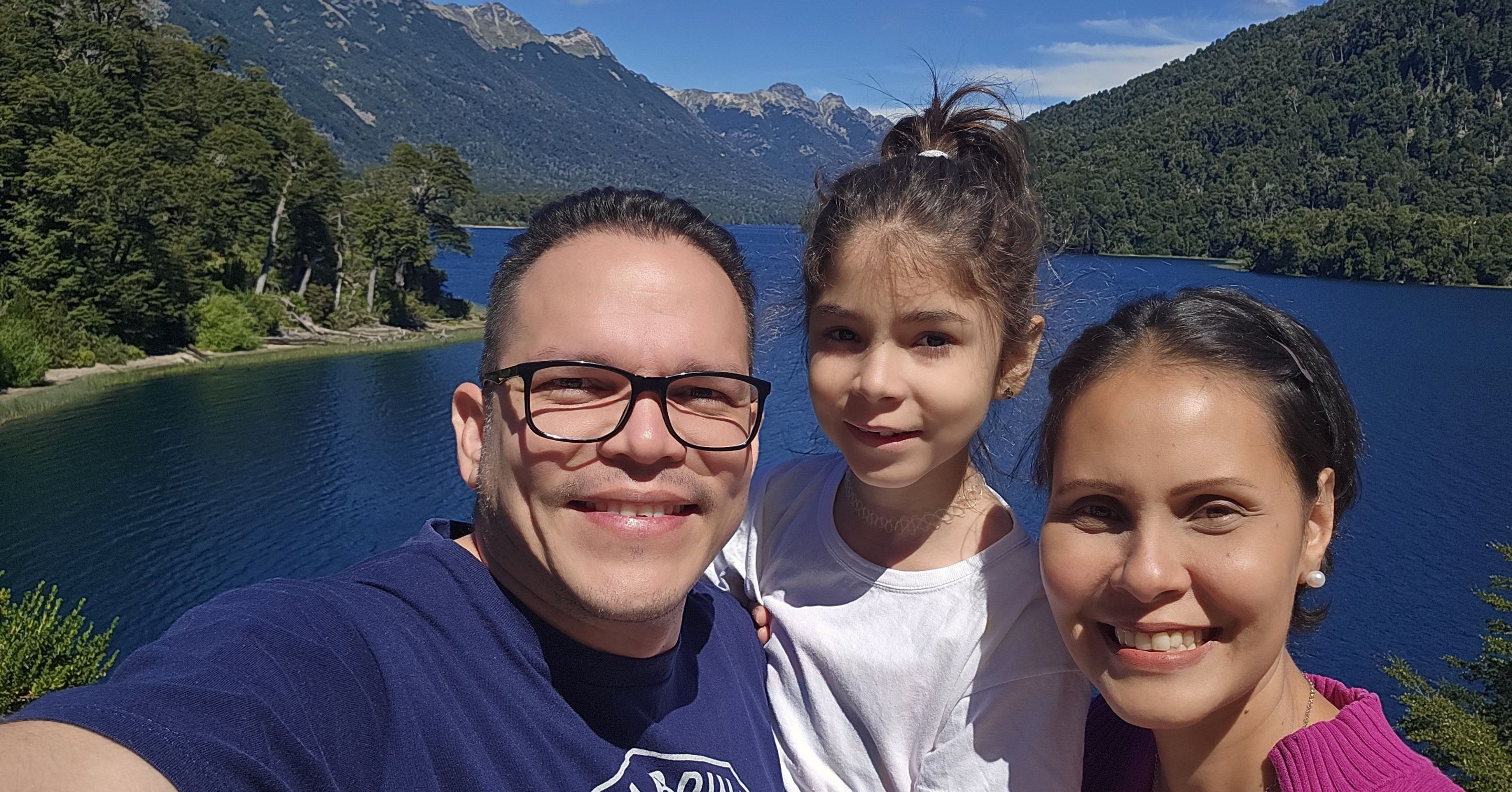
Continuamos explorando y ahora nos encontramos con el Lago Escondido, este lago se encuentra entre un bosque, tanto así, que el acceso y tomar una buena panorámica no es tan fácil. Pero lo poco que se puede apreciar es totalmente hermoso. En este lago abundan el Pandú, que es el ciervo originario de la Patagonia.
We continue exploring and now we find the Escondido Lake, this lake is located in a forest, so much so, that access and take a good panoramic view is not so easy. But the little that can be appreciated is totally beautiful. In this lake abound the Pandú, which is the native deer of Patagonia.
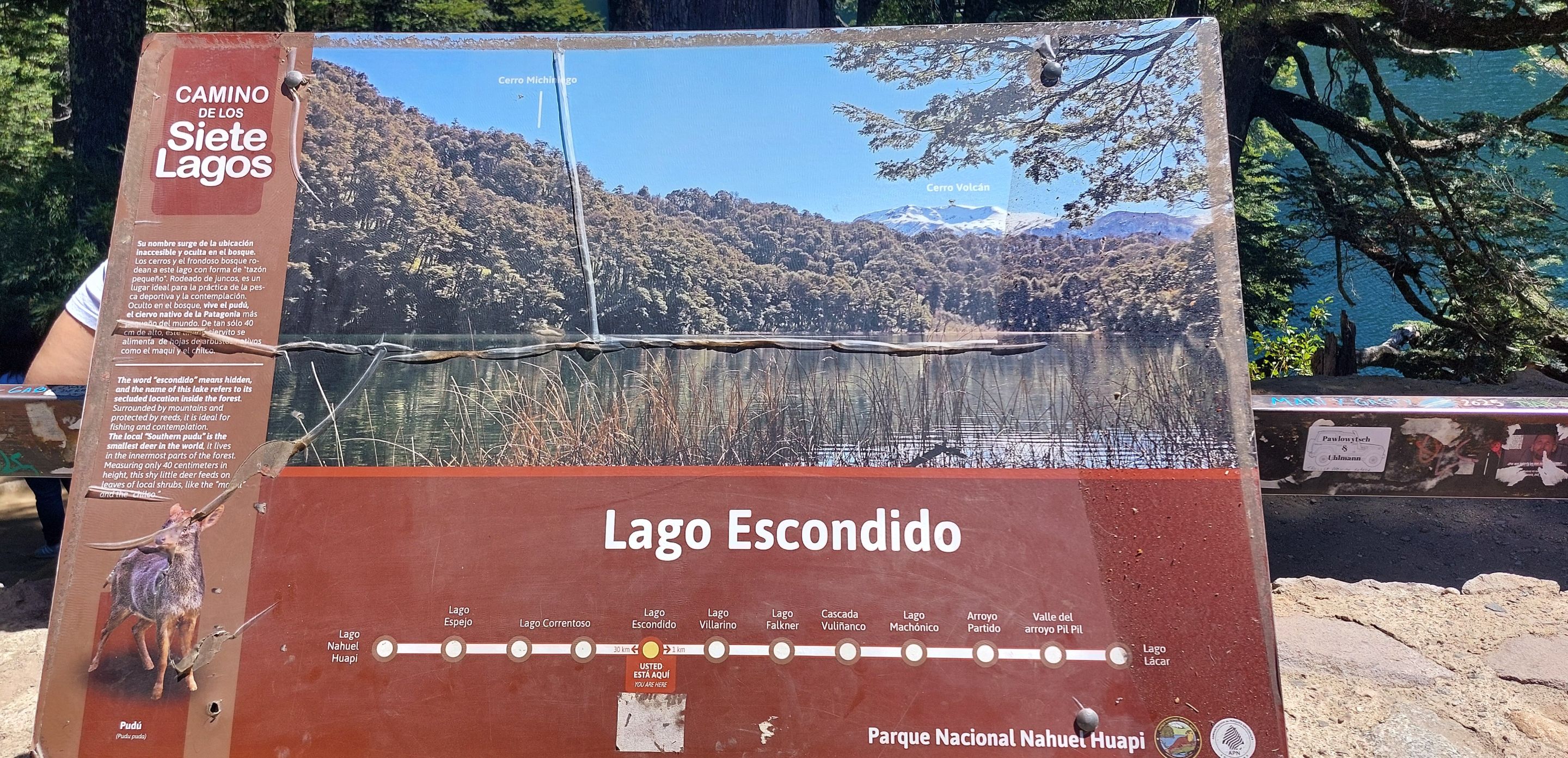
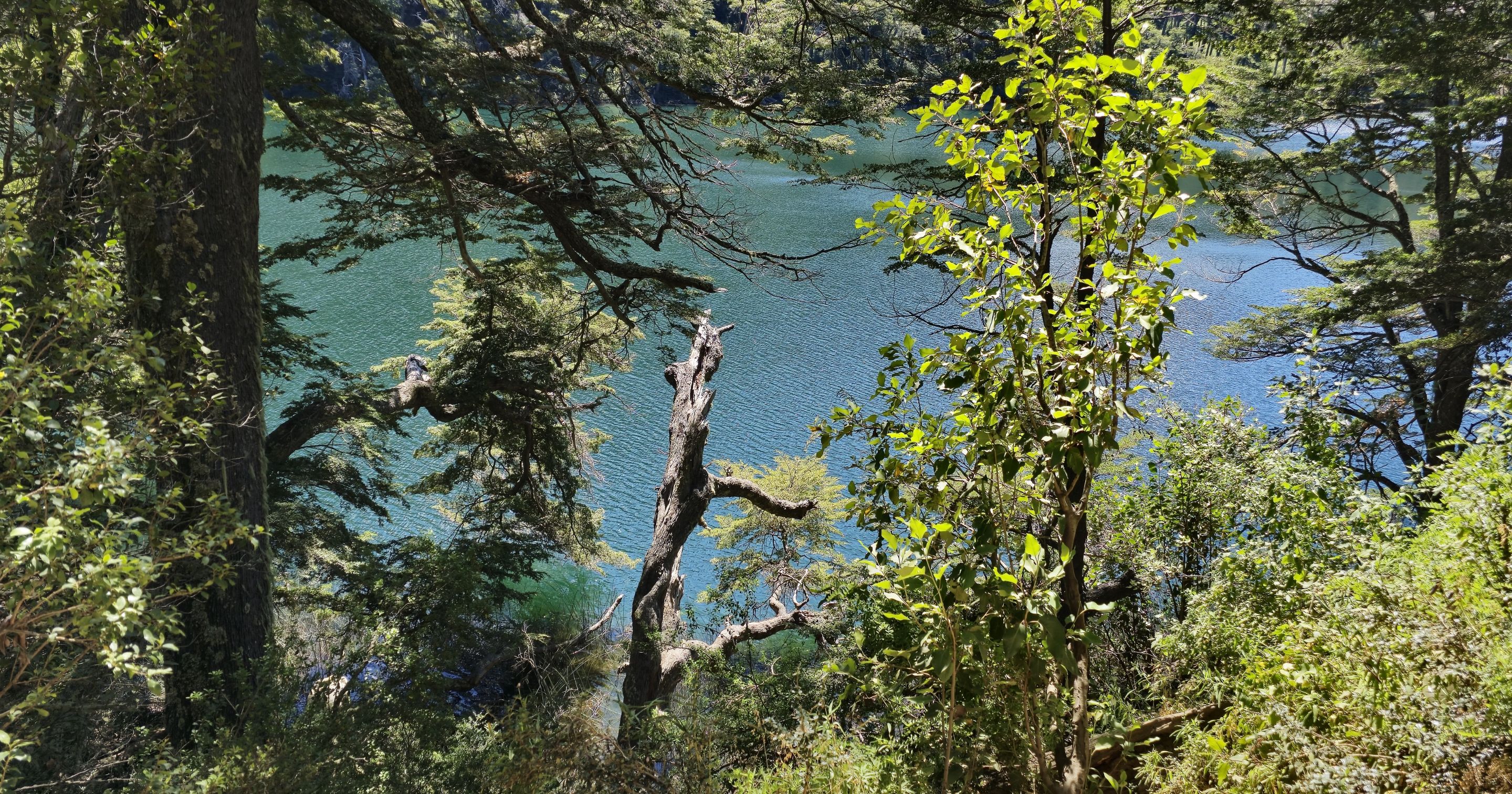
Seguidamente se presenta el Lago Villarino, su nombre fue colocado en honor al explorador español Basilio Villarino, quien realizó gran parte de sus exploraciones en la Patagonia Argentina. El animal más destacado del territorio se llama Huemul, otro tipo de ciervo nativo de la región.
Next is Lake Villarino, named in honor of the Spanish explorer Basilio Villarino, who carried out most of his explorations in Patagonia Argentina. The most prominent animal of the territory is called Huemul, another type of deer native to the region.
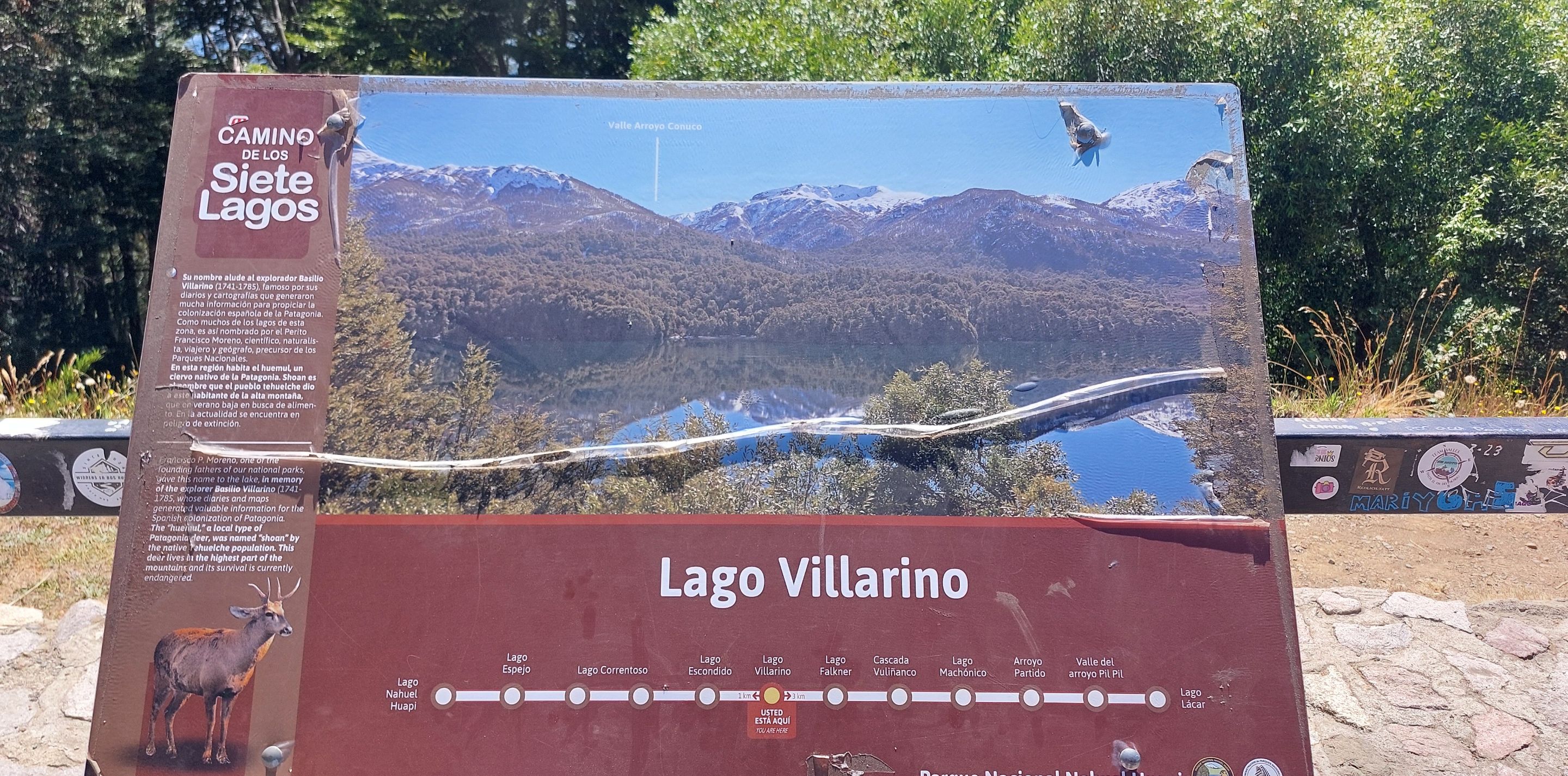
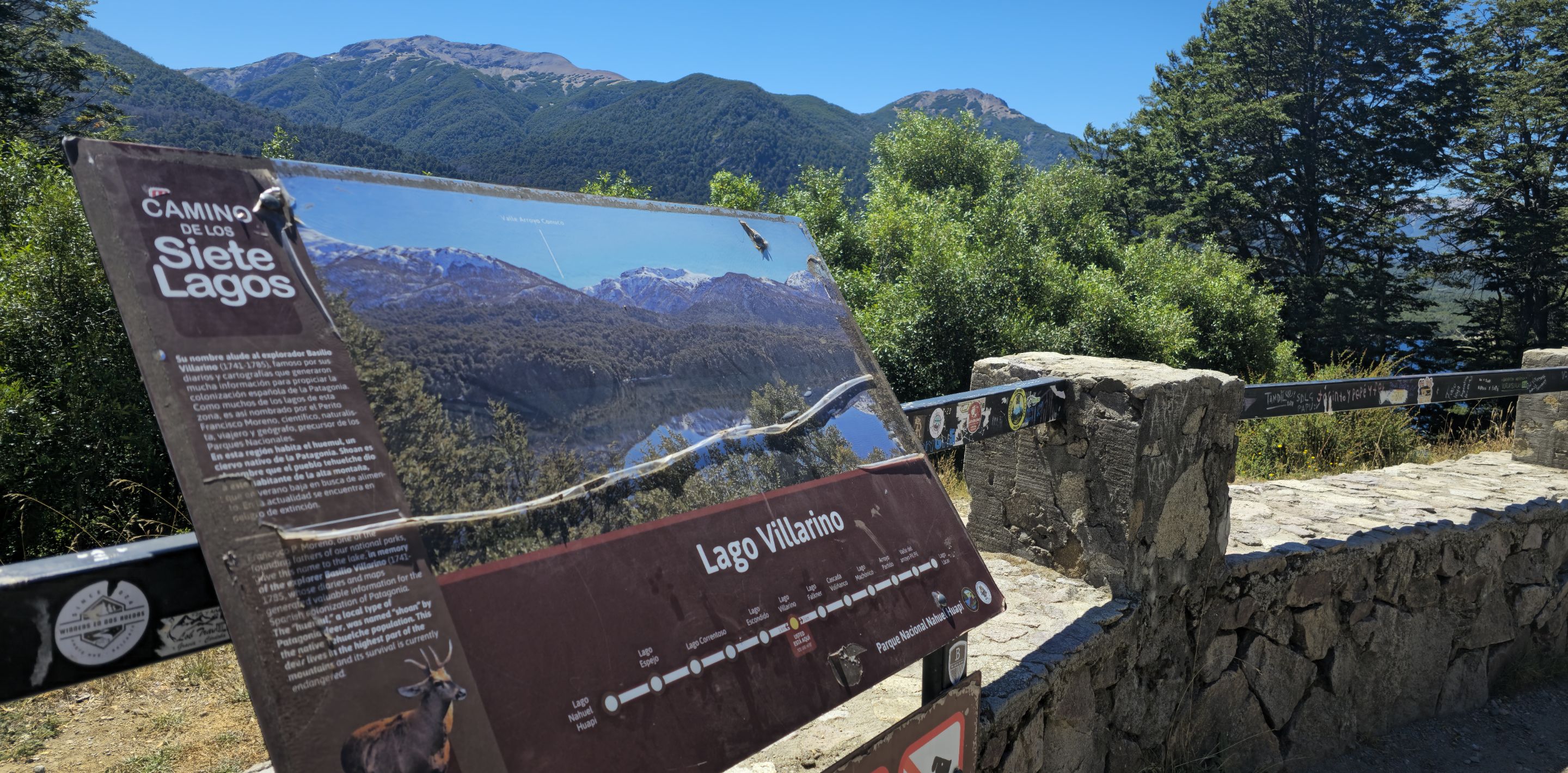
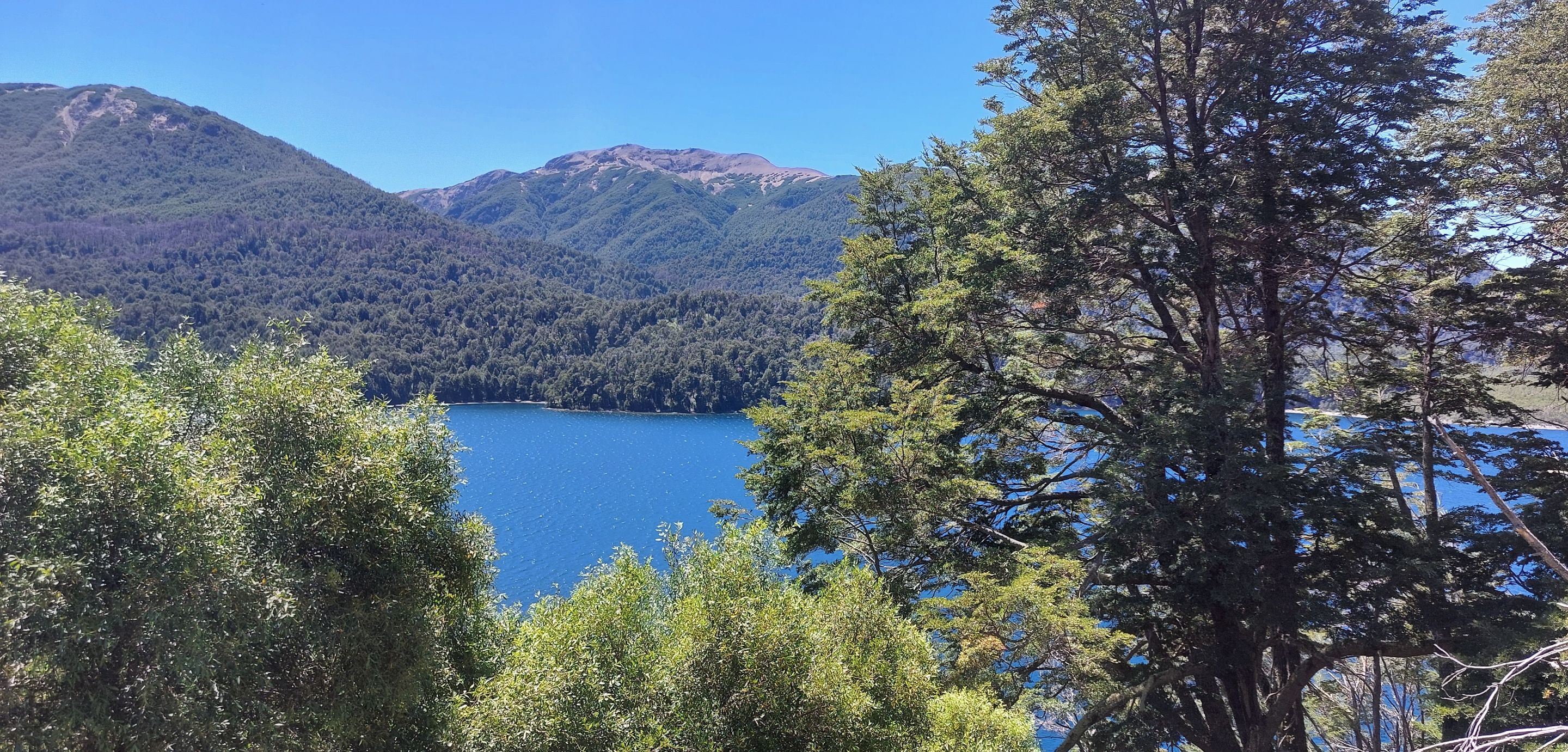
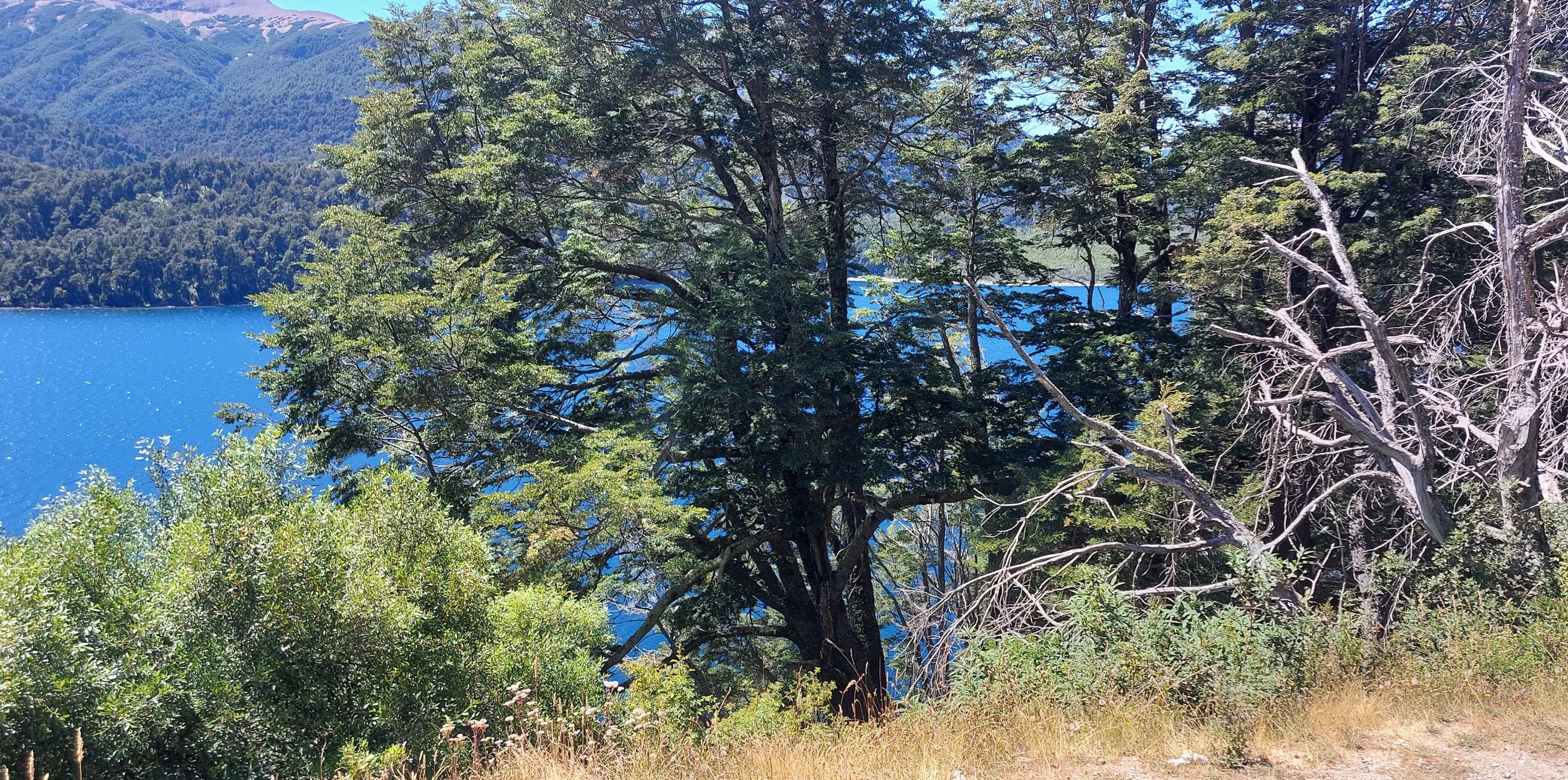
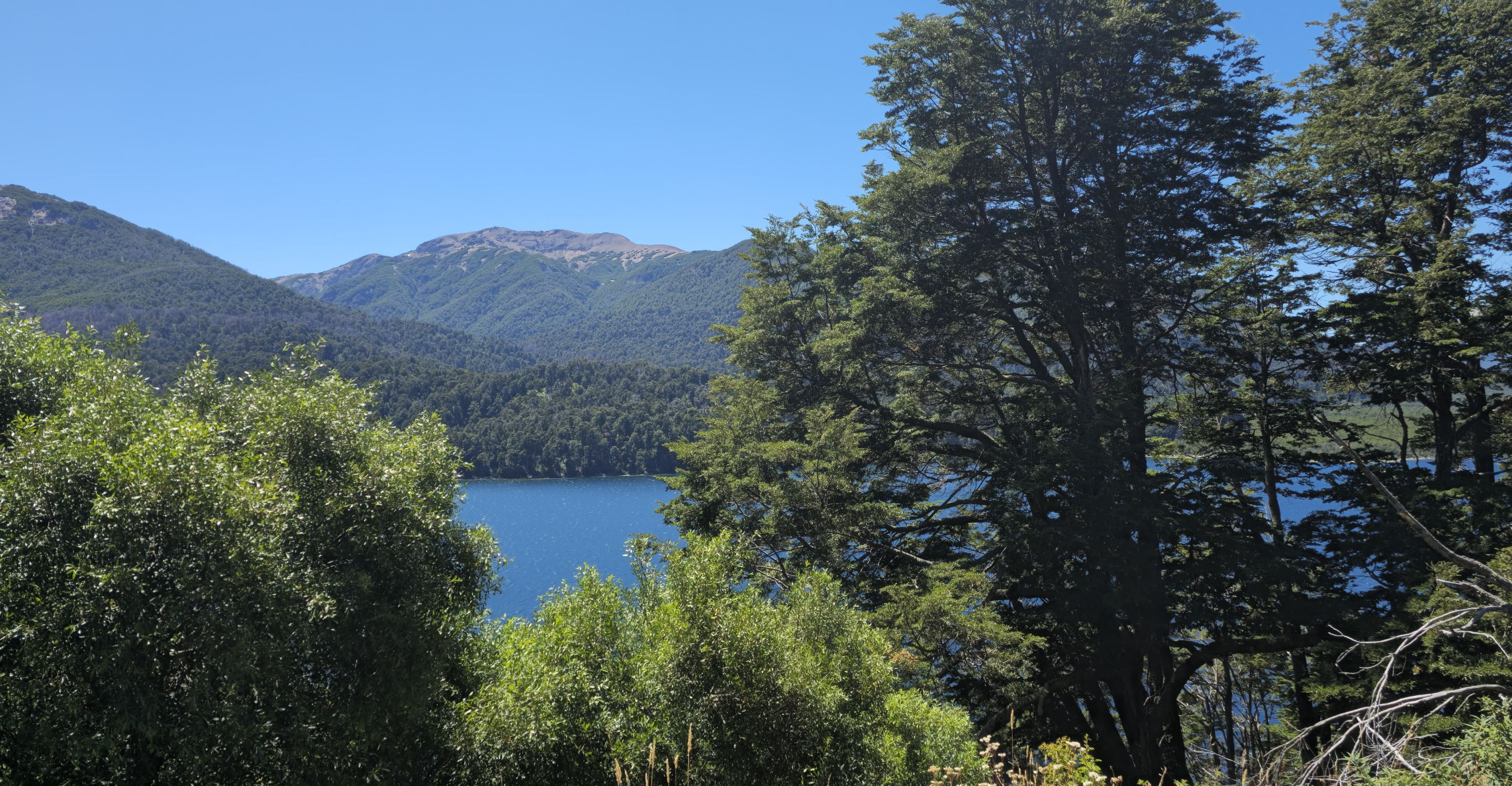
El siguiente lago se llama Lago Falkner, este particularmente me encanto ya que lo puedes apreciar de cerca y ver la tranquilidad de sus aguas. Su nombre se debe al explorador ingles Thomas Falkner, sacerdote misionero de la Patagonia. Este lugar, está representado por un ave llamada Huala.
The next lake is called Falkner Lake, I particularly loved this one because you can appreciate it up close and see the tranquility of its waters. Its name is due to the English explorer Thomas Falkner, missionary priest of Patagonia. This place is represented by a bird called Huala.
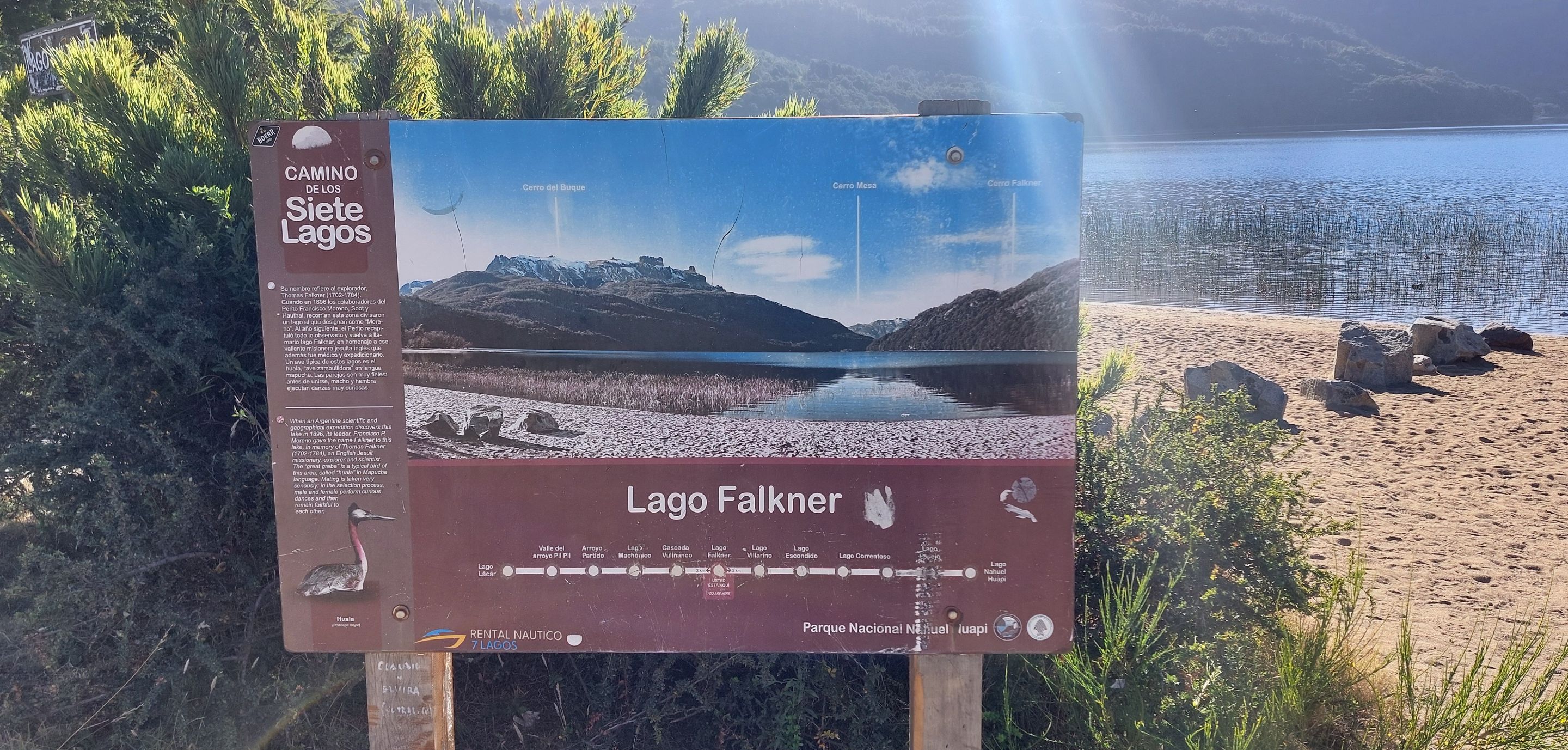
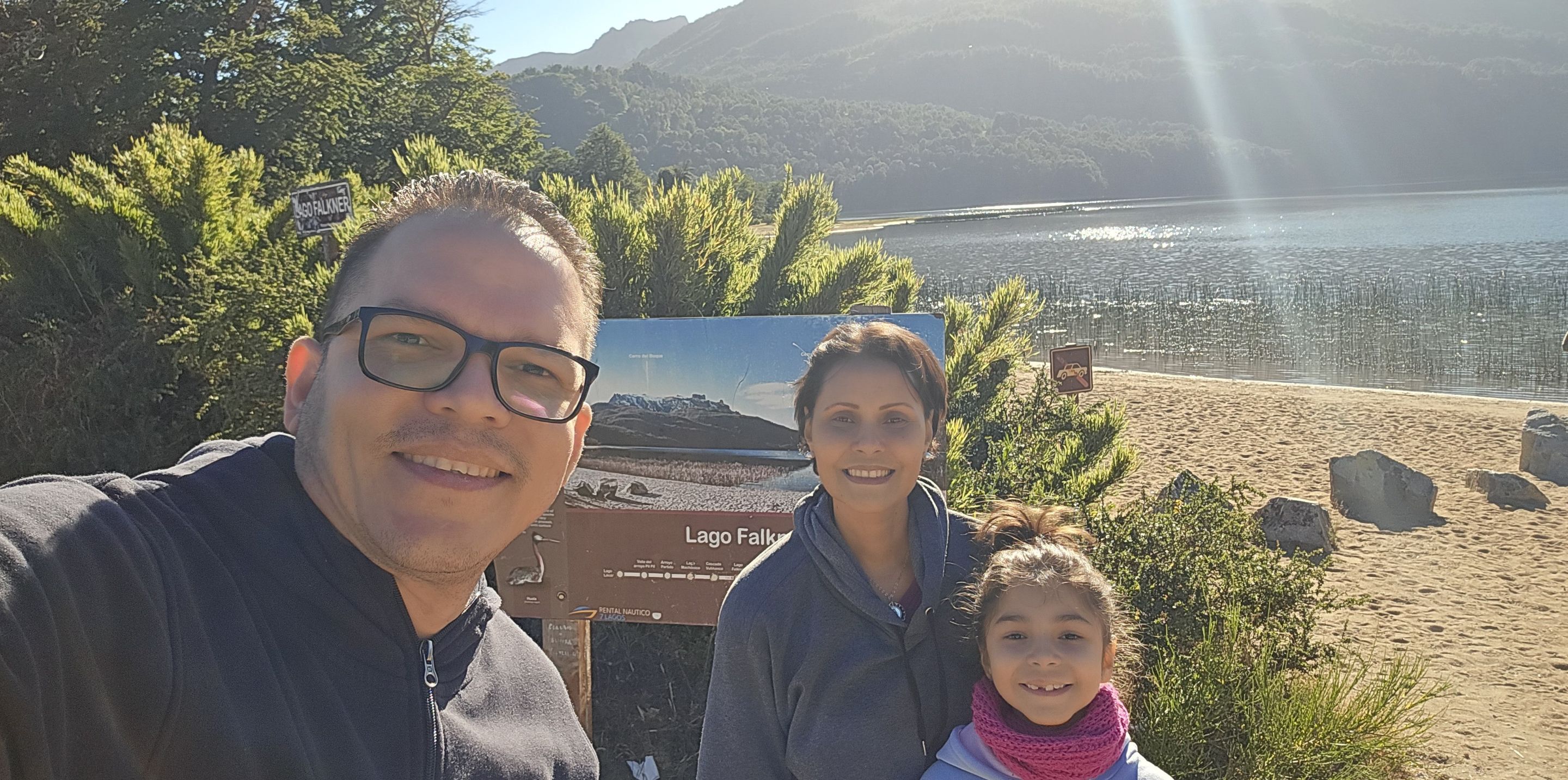
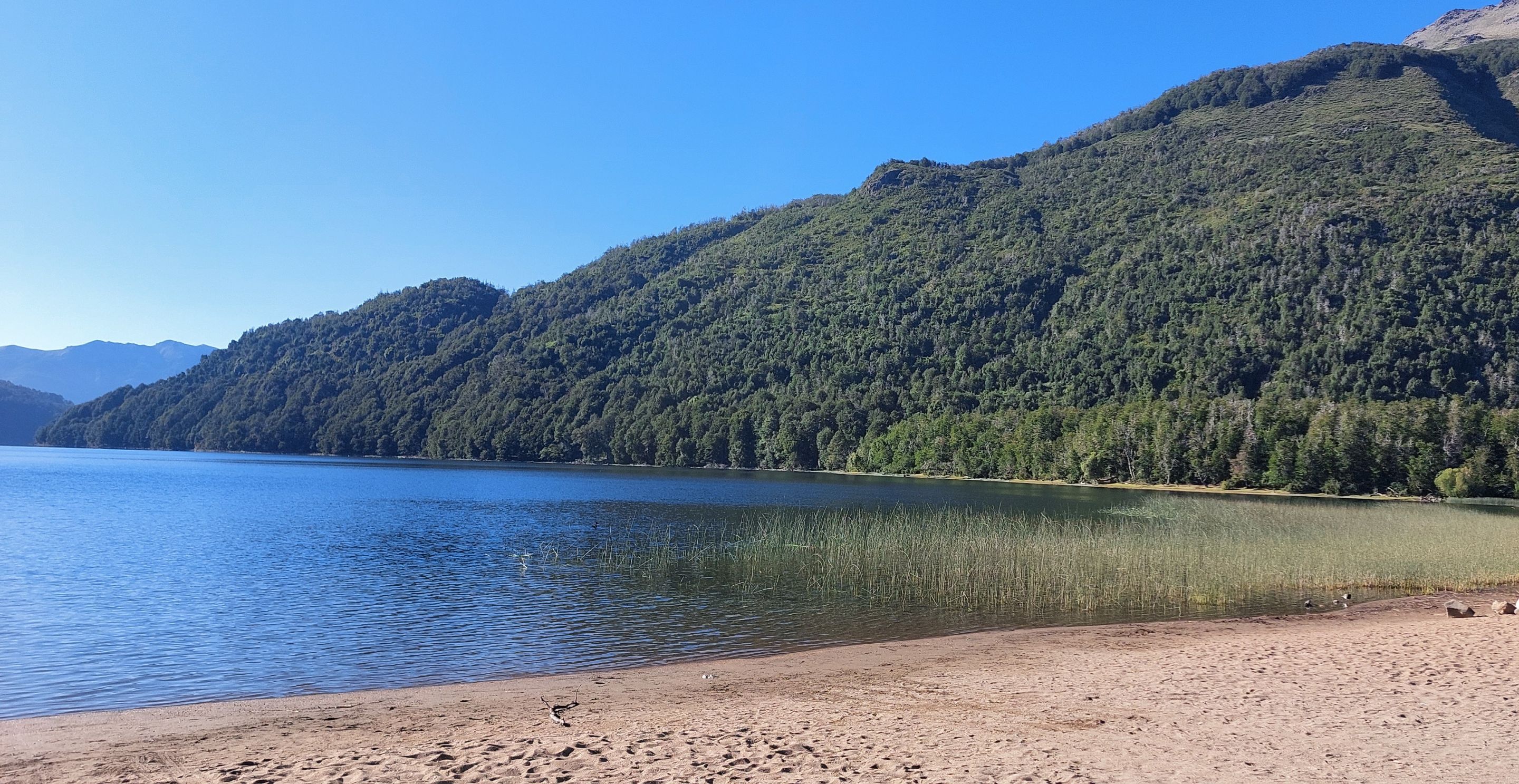
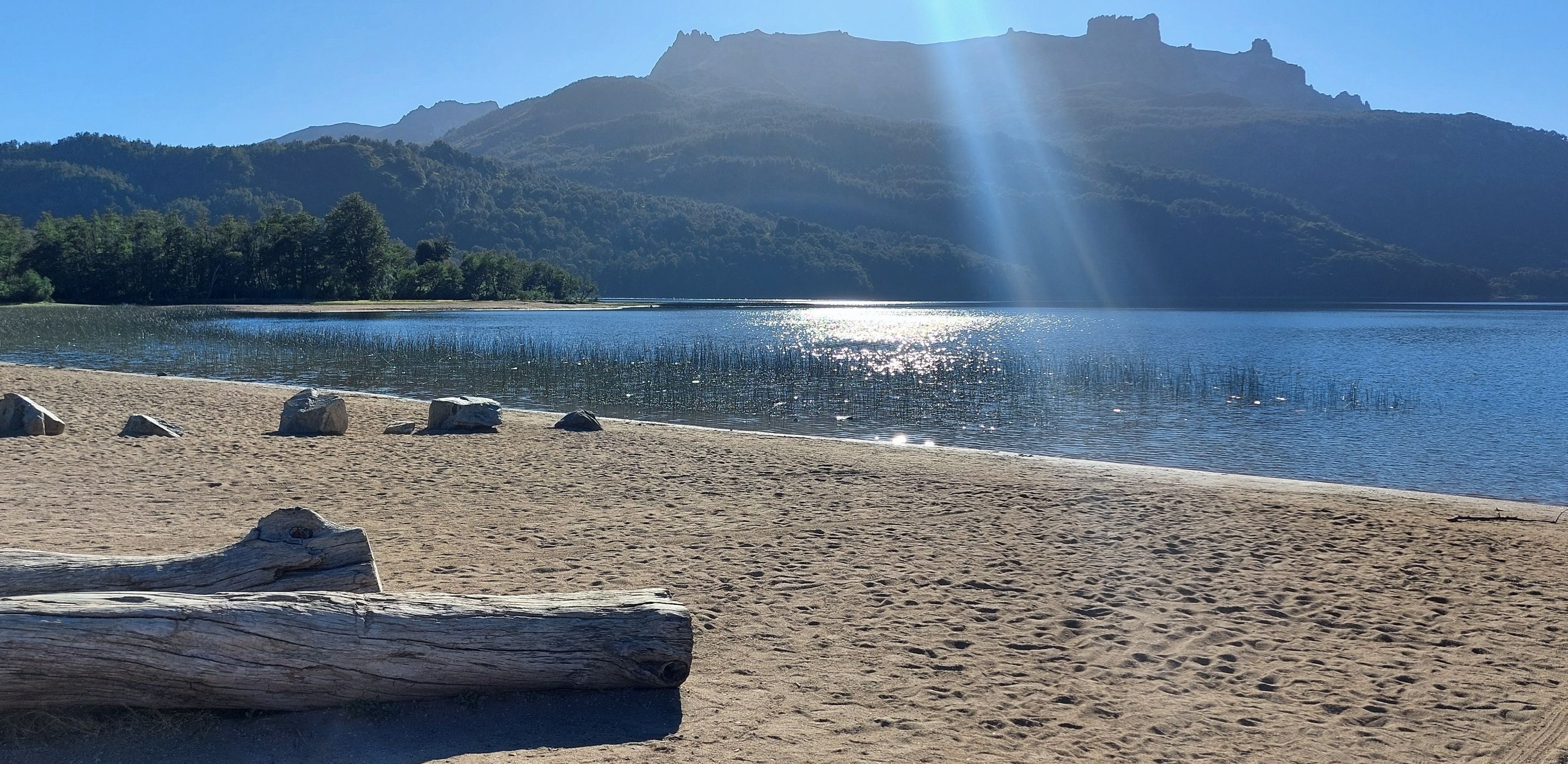

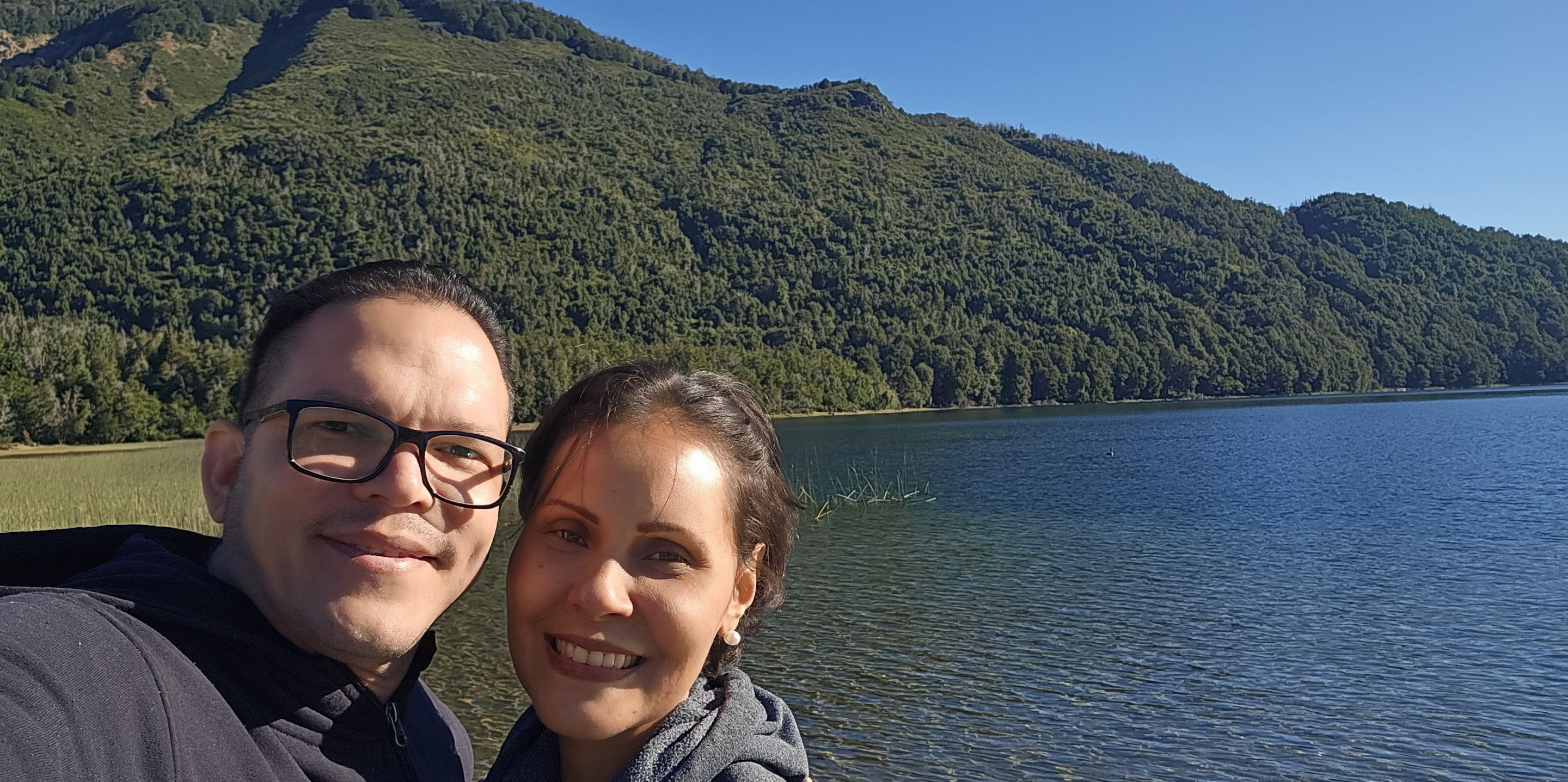
Con un azul intenso y rodeado de montañas cubiertas de pinos, nos llega el Lago Machónico, del lenguaje mapuche, (pueblo indígena de Argentina) su nombre se debe a los cangrejos de agua dulce que habitan en este lago.
With an intense blue color and surrounded by mountains covered with pine trees, we arrive at Lake Machónico, from the Mapuche language, (indigenous people of Argentina) its name is due to the freshwater crabs that inhabit this lake.
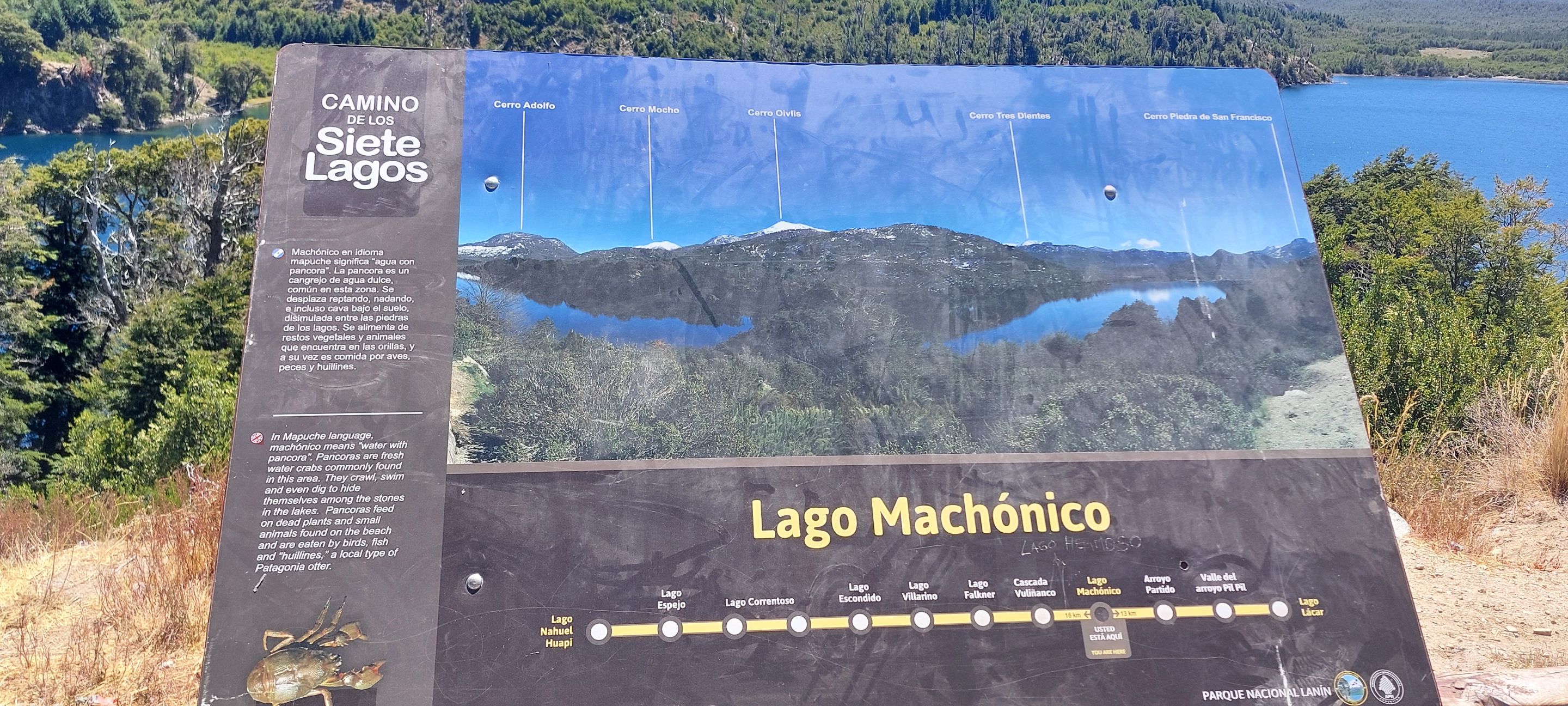



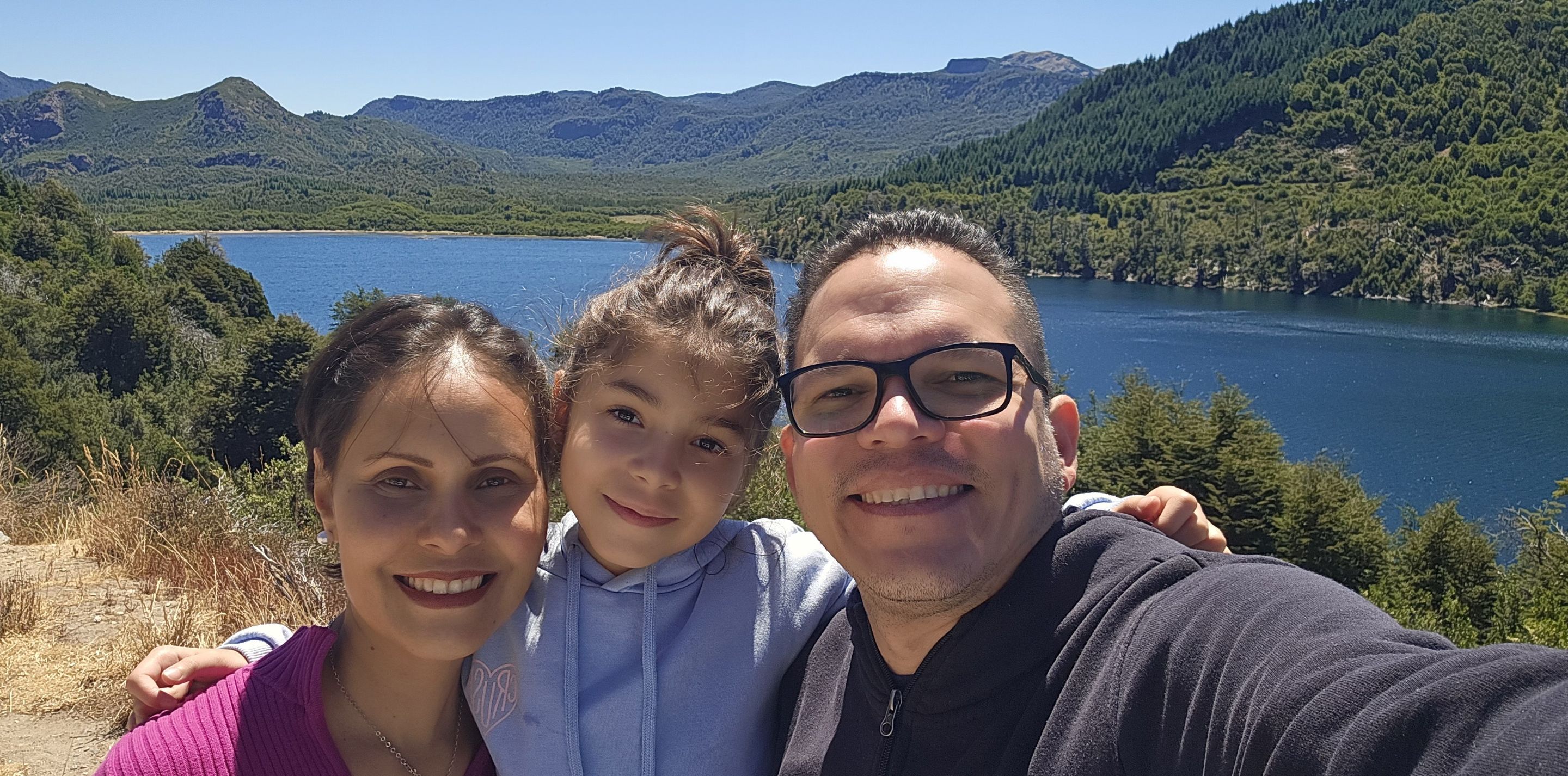
El último que nos encontramos en este camino es el Lago Lácar, la cual lo pude mostrar con más detalle en mi post San Martín de los Andes: El refugio de la Patagonia que inspira calma . Un lago sublime que te envuelve con su belleza y transparencia de sus aguas.
The last one we found on this road is Lake Lácar, which I could show in more detail in my post about San Martín de los Andes. A sublime lake that envelops you with its beauty and transparency of its waters.
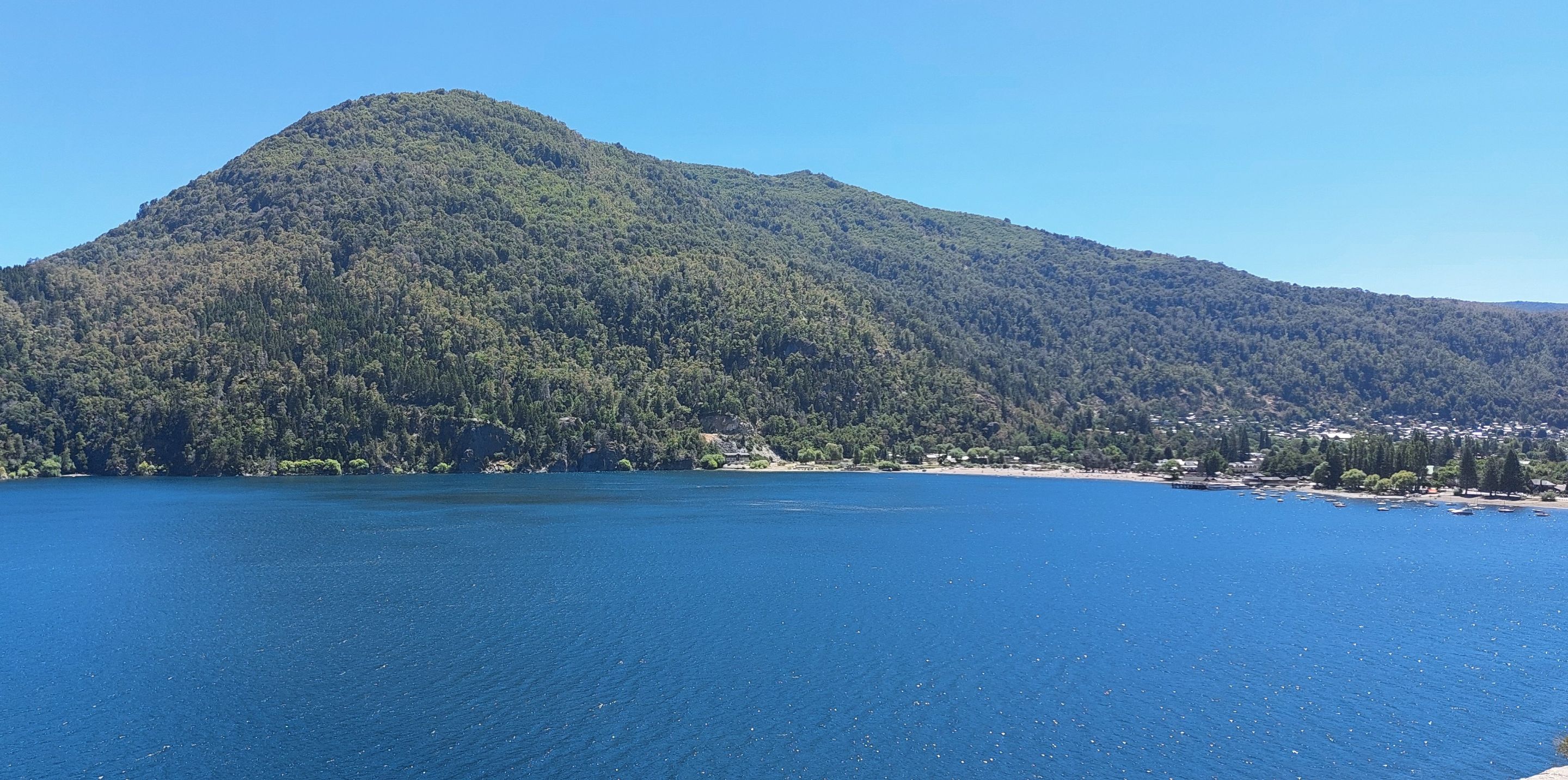
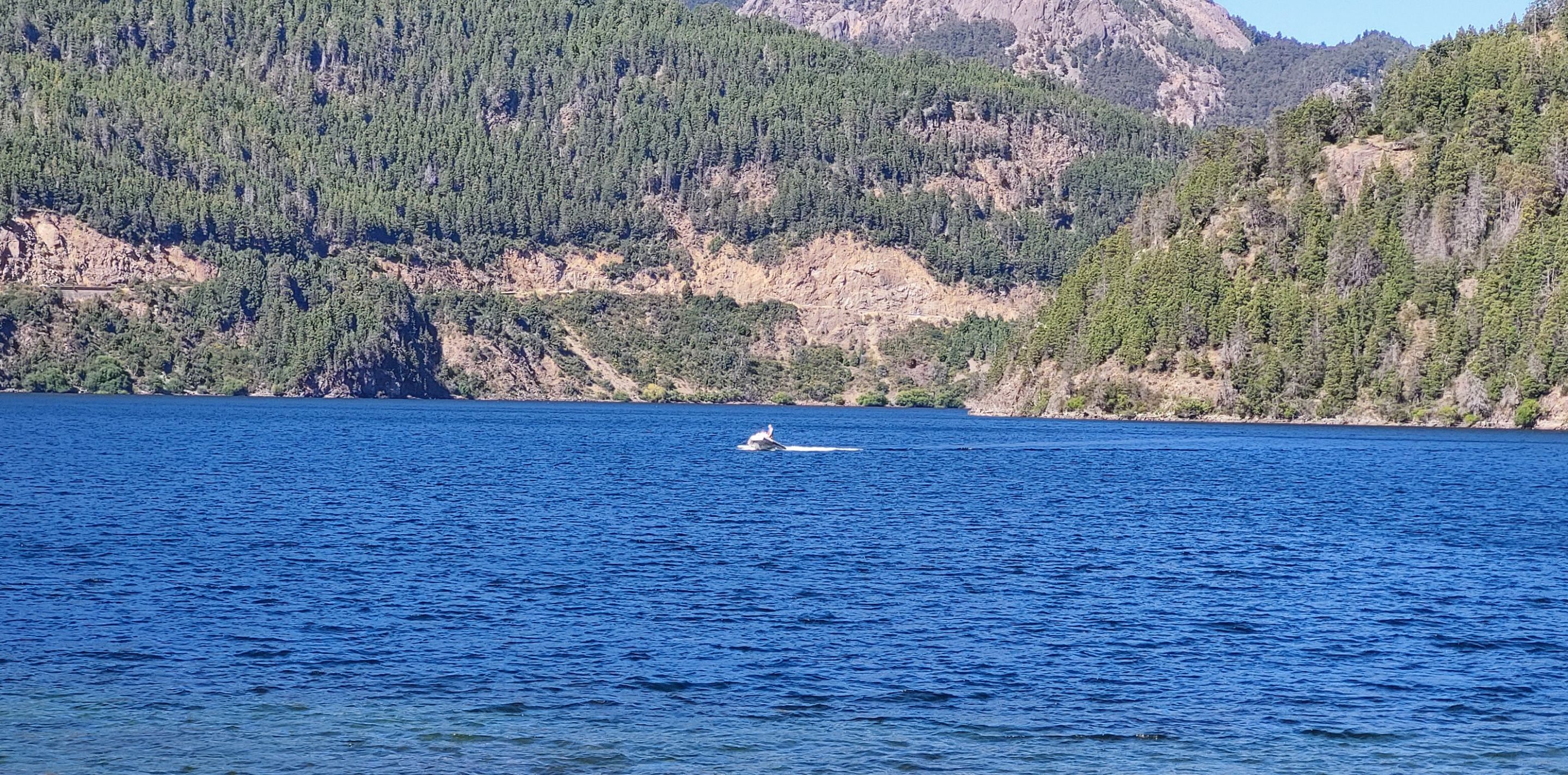
Una vez recorrido la ruta de los siete lagos, emprendemos nuestro regreso, haciendo una corta parada en un pueblito llamado Dina Huapi donde también se puede observar el Lago Nahuel Huapi desde otro ángulo y con una linda vegetación a su alrededor.
Once we have traveled the route of the seven lakes, we start our return, making a short stop in a small town called Dina Huapi where you can also see the Nahuel Huapi Lake from another angle and with beautiful vegetation around it.
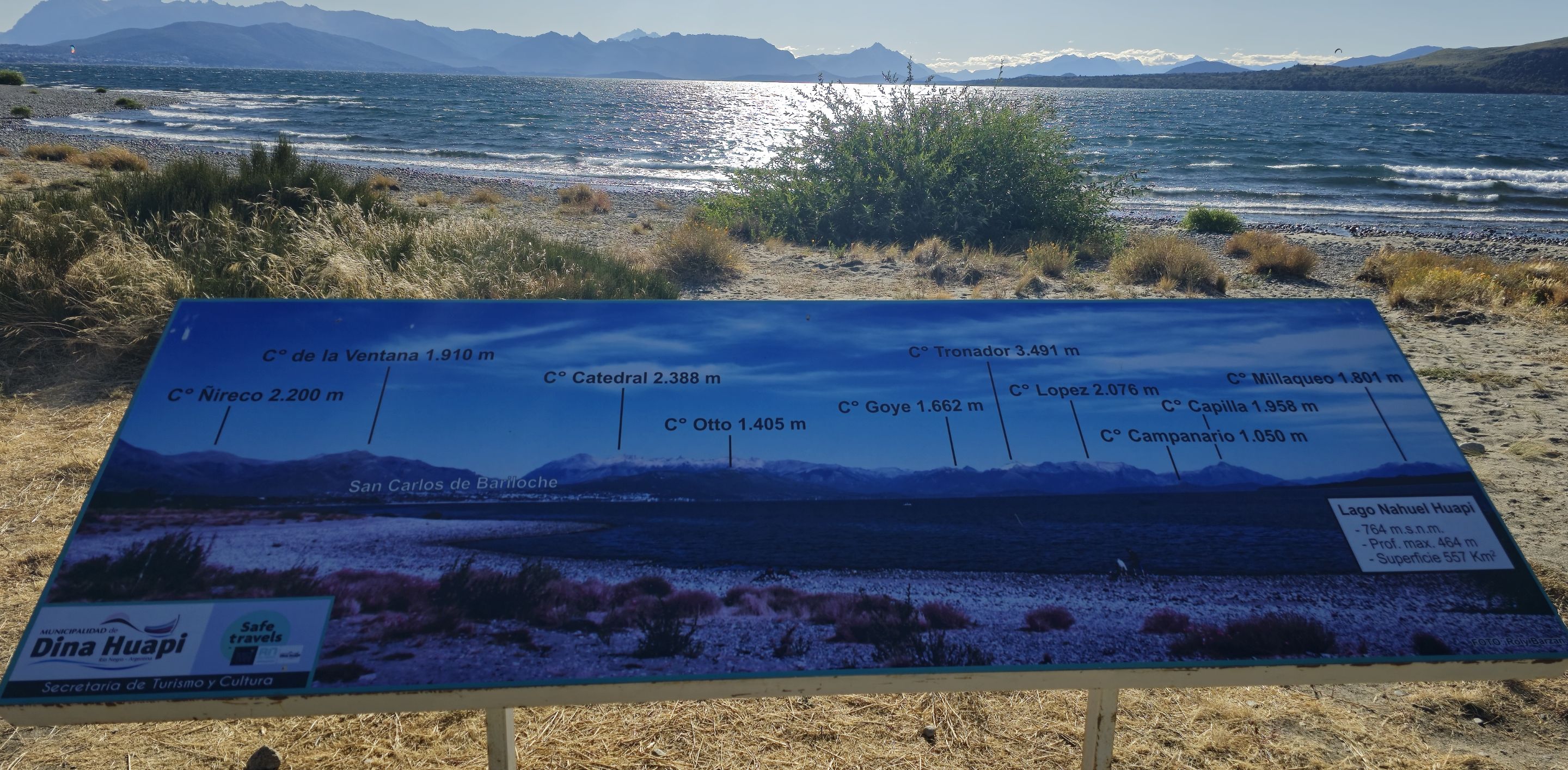


Esta fue otra aventura hermosa en la maravillosa Patagonia Argentina.
This was another beautiful adventure in the wonderful Patagonia Argentina.
Gracias por visitar mí blog. Saludos
Thanks for visiting my blog. Greetings
